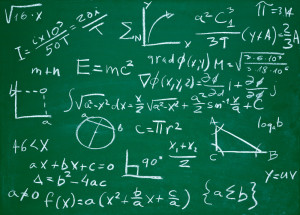by DAVID BROWN | CLEARNFO.com | December 12, 2014
 Newton’s 3 Laws of Motion were proven science for 100s of years and helped put a man on the moon and are still used today … only one problem: they are incorrect. Newton’s laws of motion, together with his law of gravitation, provide a useful basis for explaining the motion of everyday objects under everyday conditions. However, when applied to extremely high speeds or extremely small objects, Newton’s laws break down.
Newton’s 3 Laws of Motion were proven science for 100s of years and helped put a man on the moon and are still used today … only one problem: they are incorrect. Newton’s laws of motion, together with his law of gravitation, provide a useful basis for explaining the motion of everyday objects under everyday conditions. However, when applied to extremely high speeds or extremely small objects, Newton’s laws break down.
How about the Heisenberg Uncertainty Principle? It put a big crack down the middle of the well-behaved universe.
How about Zeno’s paradox Achilles and the tortoise? How about the a priori? The fallacy of logic: If A=B and B=C, then A=C, right? But the entire logic is based on an unexamined assumption of the IF which is the a priori which can never be proven.
How about the Precambrian explosion of life forms in the geologic record?
How about the three sets of laws that don’t agree? The big laws (Relativity), the medium laws (Newtonian) and the really small laws (Quantum). They are all correct except when they are not.
In ancient times mathematicians ran into a logical brick wall which no one could overcome. This had to do with the interplay of the linear, logical, discontinuous mind-set of the day –that many of us today still possess– and the reality of infinity. Corollaries to this conundrum would be the asymptote (y – 1/x), Zeno’s paradox or just trying to find the area under a curve for y = x^2 or y equals x squared.
The area of a square or rectangle is easy enough to determine. If the box is 4 ft. by 5 ft. you just multiply 4 X 5 and the area is 20 sq. ft. If however you want to determine the area under a curve defined for example by the equation of y = x^2 (Note: y is also called the function at x or f(x)), you can subdivide the area under the curve into smaller and smaller boxes but you can never determine the exact area under the curve because you can never make the boxes small enough since there are an infinite number of box sizes before you can get them small enough to determine the exact area under the curve.
The Calculus solved this problem by saying that the limit of f(x) is exactly = to the area as the change in x goes to zero. So, we never really get there, we just say that the limit or the point beyond which it can go is limited by the curve.
Mathematics…is man’s way of cutting up and compartmentalizing the world he is able to experience into digestible units and then describing relationships that seem to have some meaningful use. The result of this activity can produce useful understanding and some ability to control / manipulate our environment.
Science…I believe in the empirical method. I also believe that many in our scientific community have let their emotions and political point of view turn their science into a religion. You either believe certain “well-established facts” or you do not get tenure or you are ridiculed or…. These “well-established facts” represent a dogma or a credo similar to any religion. The result is that many place their minds in a box and their ability to take in new information and process this information critically and honestly is therefore necessarily aberrated.
Related ClearNFO Topics
The structure supporting cherished beliefs…
On Religion…
Feynman: Mathematicians versus Physicists …
Additional reading …
“However, accelerating expansion requires a mysterious source of energy in space acting against gravity, dubbed “dark energy.” Calculations show that the energy required is equivalent to 73% of the total mass-energy of the universe! Historians will look back at science today with disbelief and amusement at the ‘science’ of today. Following equally mysterious ‘black holes’ and ‘dark matter,’ if we continue to discover darkness at the present rate we shall soon know nothing!” A Nobel Prize for the Dark Side
Defying textbook science, study finds new role for proteins
